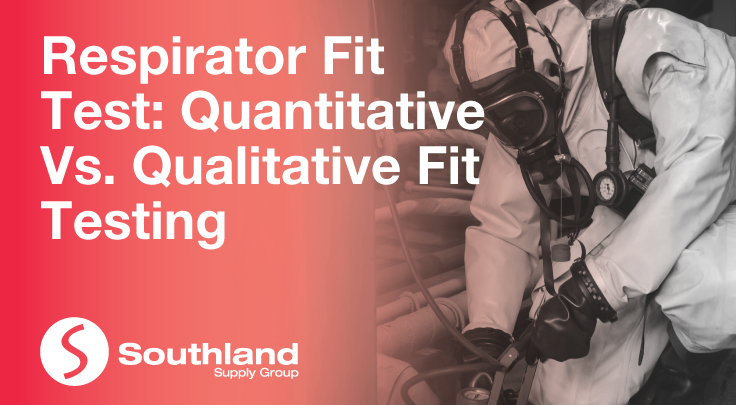
Whether you work on an oil rig, in a factory, or in a vehicle body shop, there are certain conditions that require workers to be protected with respiratory protection of some kind. A properly fitted mask is essential for protecting lungs from hazardous dusts, sprays, or gases. Respirator fit testing and evaluation is the best way to ensure their safety.
There are two different procedures of respirator fit testing: 1) Quantitative; 2) Qualitative. But what is the difference between the two? Find out below:
Qualitative Fit Testing:
Qualitative fit testing is a pass/fail method used on half-respirators that relies on senses like taste and smell in order to detect air leakage from the respirator. Typically, this test is used for workers that would be required to wear either a disposable face mask or half face respirator that just covers the nose and mouth.
The procedure typically relies on a harmless, yet bitter-tasting chemical such as Bitrex, which cannot be detected when breathed through a properly fitted mask, but can be smelt and tasted if the mask is not providing a secure fit. Rather than measuring the amount of leakage into the respirator, qualitative fit testing identifies whether the respirator is in working order. If the wearer can taste a bitter substance, the mask is considered to have failed.
Substances that may be used for qualitative fit testing include:
- Isoamyl acetate (banana smell)
- Bitrex (bitter taste)
- Saccharin (sweet taste)
- Irritant smoke (coughing)
Quantitative Fit Testing:
Quantitative fit testing doesn’t just test on a pass/fail basis, it actually measures how effective the respirator fit is. This test method can be performed on any kind of disposable respirator, half face respirator or tight-fitting full-face respirator and it measures the actual amount of leakage into your facepiece. The test doesn’t rely on any of your senses or response to irritation and instead uses a probe attached to the facepiece to measure leakage by comparing the pressure inside the mask and outside the mask. Quantitative fit testing is considered the gold standard for workers exposed to hazardous particles in the workplace.
According to OSHA regulations, there are three acceptable quantitative fit test methods. These includes:
- Generated Aerosol – In this process, an aerosol is dispensed into a booth or test chamber and measures any leaks in the respirator.
- Ambient Aerosol – This method uses lasers to measure concentrations inside and out of a mask. No test chamber is needed for the test.
- Controlled Negative Pressure – In this test, a fixed vacuum is created on the facepiece with special adapters that measure airflow or leak rate.
While respirator fit tests may be easy to lose track of, it is a vital element in OSHA compliance. Furthermore, the respirator fit test is an important tool in keeping your employees healthy and safe from environmental hazards.
Southland Supply Group
Are you looking for the right respirator testing and evaluation kit? Stop into Southland Supply Group, visit our website or give us a call at 1800 77 22 91. We’d love to help get you and your team in the gear they need to work safely!
